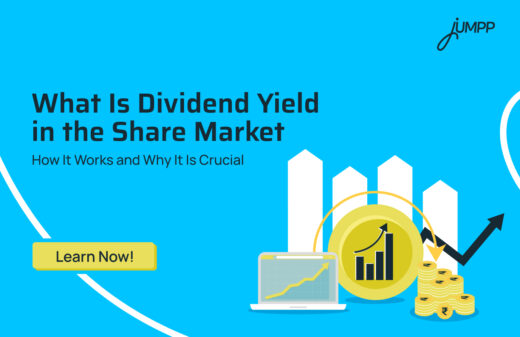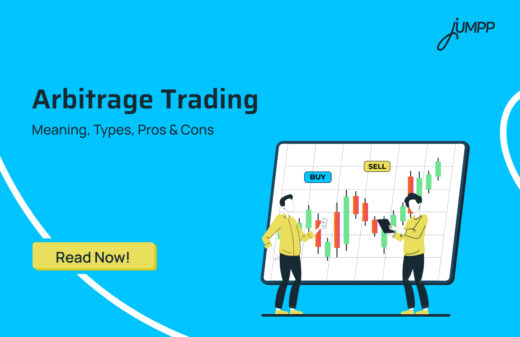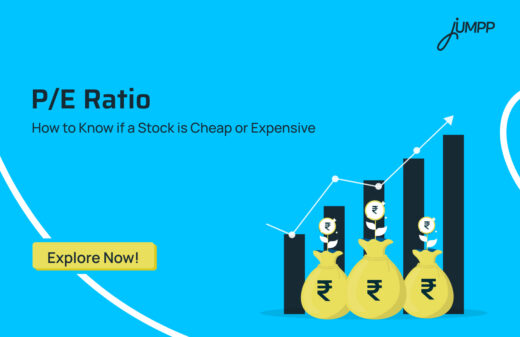What is Limit Order and How It Works in the Share Market

So, you’ve just opened your first Demat account and started exploring your trading app. Suddenly, you see terms like Market Order, Limit Order, and Stop Loss. Your first thought might be, “Do I really need to know all this just to buy a stock?” Even if you’ve already placed a few trades, understanding these order types is important. Most beginners just go with the default option, hit “Buy” and hope for the best. That’s called a Market Order. But there’s a smarter way to trade: the Limit Order. Now, what is a limit order and how does it work?
A limit order lets you set the price at which you want to buy or sell. For example, if you think, “I’ll only buy this stock if it drops to ₹100,” a limit order will make that happen automatically without the need to keep watching the market.
Let’s explore the basics in detail!
What is Limit Order in Share Market?
A limit order is a simple instruction you give your broker or trading app. You are telling them, “Buy or sell this stock, but only at this price or better.” It ensures you get the price you want, but it does not promise that your trade will actually happen. Your order will only be executed if the market price touches your set limit price or moves in your favour.
Common Types of Limit Orders You Can Use
1. Buy Limit Order
You place this order when you want to buy a stock at a specific price or lower. It ensures you don’t pay more than your set price. For example, if a stock is trading at ₹120 and you set a buy limit order at ₹115, the order will only execute if the price drops to ₹115 or below.
2. Sell Limit Order
You place this order when you want to sell a stock at a specific price or higher. It ensures you don’t sell for less than your set price. For example, if a stock is trading at ₹150 and you set a sell limit order at ₹155, the order will only execute if the price rises to ₹155 or above.
3. Immediate or Cancel (IOC) Limit Order
This order will try to execute immediately at your set price or better. If the entire quantity cannot be matched right away, the remaining order is cancelled. This is useful for traders who want quick execution without leaving pending orders in the system.
4. Day Limit Order
This order remains active only for the trading day on which it is placed. If the price condition is not met by the end of the day, the order is cancelled automatically.
5. Good Till Cancelled (GTC) Limit Order
This type of limit order is available with some brokers; this order remains active until you manually cancel it or until the broker’s set validity period expires. This is useful when you are waiting for a specific price over days or weeks.
How Does a Limit Order Work?
A limit order works in a simple way where you set your preferred price, and the trade gets executed only if the market matches that price or gives you a better one.
If you set a buy limit order:
You decide the maximum price you are ready to pay. The order will be completed only if the stock’s price falls to your limit or below.
If you set a sell limit order:
You decide the minimum price you are ready to sell at. The order will be completed only if the stock’s price rises to your limit or above.
Limit Order Example-
Let’s say a stock is trading at ₹100. You place a buy limit order at ₹95. Your order will be executed only if the price drops to ₹95 or lower. If the price never reaches ₹95, your order will remain pending.
Top Features of Limit Orders Every Trader Should Know
This is a trading tool that lets you set the rules instead of letting the market decide for you.
1. Fixed price control
You decide the exact price at which you are willing to buy or sell. The system will not execute your trade at any price worse than what you set.
2. Conditional execution
The trade will only be executed if the market price reaches your set price or moves in your favour. Until then, the order remains pending.
3. Works for both buying and selling
Limit orders can be placed whether you want to enter a position (buy) or exit it (sell).
4. Flexible validity options
Most Indian trading platforms allow you to choose how long your limit order stays active. You can set it for the same trading day or until you cancel it, depending on your strategy.
5. Suitable for all market segments
Limit orders can be used in equity, futures, options, and even commodities on Indian exchanges like NSE and BSE.
6. Useful during market volatility
When prices fluctuate quickly, a limit order ensures you only transact at the price you prefer.
Benefits of Limit Orders and How They Improve Your Trades
If you know the price you want, a limit order helps you get it without overpaying or underselling.
1. Full price control
You never have to worry about paying more or selling for less than you intended. This is especially important during volatile market hours such as market opening or after major news.
2. Protection in volatile markets
If a stock’s price suddenly spikes or drops, your limit order acts as a safeguard, ensuring your trade only happens at a level you are comfortable with.
3. Encourages disciplined trading
Limit orders help you stick to your planned buying or selling price, avoiding impulsive trades driven by emotions.
4. No need to monitor constantly
Once you set a limit order, you can step away from your screen. The system will automatically execute your trade if the market reaches your price.
5. Helps in less-traded stocks
For illiquid stocks with wide bid-ask spreads, a limit order ensures you are not forced into an unfavourable trade.
6. Flexible usage
Can be used for intraday trades, short-term opportunities, or long-term investments, making them suitable for all kinds of traders and investors.
Risks of Limit Orders and How to Manage Them
While it gives you control, there is always a chance that your trade may never go through.
1. No guarantee of execution
If the market never touches your set price, your trade will not happen. This can be frustrating when prices come close but do not match your limit.
2. Missed market moves
Sometimes the stock price may just touch your limit and move sharply in your favour, but if the order isn’t filled completely, you miss out on potential profits.
3. Partial execution risk
In less liquid stocks, only part of your order may be filled at your set price, leaving the rest unexecuted.
4. May not suit fast-moving markets
In very active stocks, prices can jump past your limit before your order is matched, meaning you may miss the trade entirely.
5. Needs accurate price setting
If you set your limit too far from the current market price, the order may stay pending for too long or never get executed, causing you to miss better entry or exit opportunities.
Things You Should Know Before Placing a Limit Order
Placing a limit order is simple, but a few details can make all the difference to your trading results.
Here is what you should keep in mind.
1. Your trade may not get executed
A limit order will only go through if the market price reaches your set price or better. If that does not happen, the order will remain pending or eventually expire. For example, if you set a buy limit at ₹750 for a stock trading at ₹770 and the price never drops to ₹750, nothing will happen.
2. It can protect you from overpaying or underselling
Limit orders ensure you do not end up buying at a high price or selling too low during sudden market swings. This is useful during volatile trading sessions like when corporate results are announced or during Union Budget day.
3. Patience is important
Since the execution is not guaranteed, you may need to wait longer for the price to match your limit. If you are an intraday trader, this waiting time could mean missing out on other opportunities.
4. Works best when you have a target price in mind
Limit orders are most effective when you have done your research and know exactly at what price you want to enter or exit. For example, if you have analysed that a stock is a good buy at ₹1,000, you can set the limit and let the order work for you.
5. Choose the validity period wisely
Most trading platforms let you choose how long your order stays active. It can be for the day, for a week, or until you cancel it. In India, the common options are “Day” orders or “IOC” (Immediate or Cancel). Day orders are cancelled automatically if they are not executed by market close.
6. Ideal for low-volume stocks
In stocks with lower trading volumes, market orders can cause you to buy or sell at unfavourable prices because of wider bid-ask spreads. Limit orders give you control and prevent such slippage.
How to Use Limit Orders Effectively
Limit orders are quite helpful. Here’s how you can use them while trading:
- Open a free Demat Account to place orders online.
- Decide your target price before placing the order. This should be based on your research and market analysis.
- Select “Limit Order” instead of “Market Order” in your trading app or website.
- Enter the exact price at which you want to buy or sell.
- Choose the validity, “Day” (valid until market close) or “GTC” (Good Till Cancelled, if your broker offers it).
- Monitor your order — if it hasn’t been executed, you can modify or cancel it.
Difference Between Limit Order, Market Order & Other Orders
| Order Type | What It Means | When It Executes | Best For |
| Limit Order | Buy/Sell at your set price or better | Only if the stock reaches your set price | Controlling the price of trade |
| Market Order | Buy/Sell immediately at the best available price | Instantly | Quick execution without caring about the exact price |
| Stop Loss Order | Automatically sells or buys when a certain trigger price is hit | When the trigger price is reached | Limiting losses |
| Stop Limit Order | Similar to stop loss, but with a limit price after the trigger | When the trigger price hits, the order executes at the limit or better | More price control during stop loss |
Read more about –
Market Order
Conclusion
A limit order is one of the simplest yet most effective tools in trading. Whether you are a beginner exploring the share market or an experienced trader, knowing how to use a limit order can help you control your buying and selling prices and avoid impulsive trades.
It gives you the power to say, “I’ll only trade when the price is right for me.”
Limit Orders in Share Market- FAQs
In the share market, a limit order allows you to have more control over the price at which you buy or sell. You set your target, place the order, and let the system do the rest.
A stop order triggers a trade once a set stop price is reached, usually to limit losses or enter at a breakout point. A limit order executes only at your chosen price or better, giving you price control but no execution guarantee.
The main risks are that the trade may never be executed, it can be partially filled, or you may miss market opportunities if prices move past your limit without matching it.
The limit order value is the specific price you set at which you are willing to buy or sell a stock. It determines when your order will be triggered and executed.
Yes, limit orders are good if you want control over the trade price and prefer disciplined entry or exit points. However, they may not suit situations where fast execution is more important than price.
The five common order types in trading are market order, limit order, stop loss order, stop limit order, and immediate or cancel (IOC) order.






